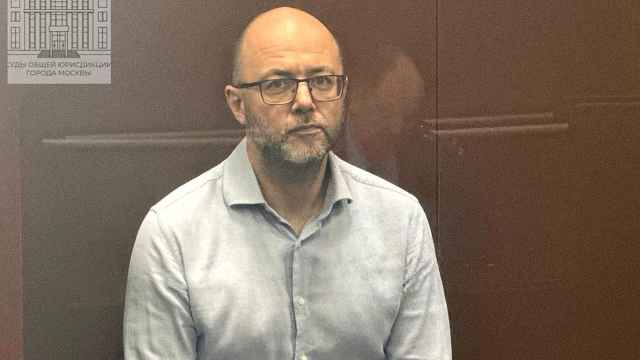Russia, with as much as a third of the world's rare earth deposits, will take at least a decade to develop them and step into the breach that has been created since China chopped supply of the metals to the rest of the world.
China controls about 95 percent of the market for the 17 elements in demand by manufacturers of everything from hybrid autos to wind power stations and has cut its export quota by about 40 percent in the past two years, sending prices soaring.
Australian and U.S. firms have been quick to launch new mines and restart mothballed operations, with projects scheduled to go online as early as the end of this year.
Russian deposits, while ranked third-largest globally, are largely undeveloped. Output remains limited to one Soviet-era plant in the Murmansk region.
"I would say if they start now you would see that at the end of this decade they could be producing," said Jack Lifton, founder of the industry consultancy Technology Metals Research.
Estimates of the size of Russia's deposits vary widely, with local geologists putting its share of the planet's supply at almost 30 percent, while the U.S. Geological Survey reported that Russia and its former Soviet neighbors hold 19 million tons of reserves, or about 14 percent of the total.
German industry is eager to tap Russia's resources. During a visit to Hanover in July, President Dmitry Medvedev said his country could become a key supplier to Europe's largest economy.
Japanese trading house Sumitomo's Kazakh joint venture SARECO is also considering possible projects in Yakutia.
No details were available from Sumitomo on the possible time frame for projects in Russia, as it has yet to commit to any specific developments.
Excluding smaller quantities of rare earths produced as byproducts by major miners such as Norilsk Nickel, Russia has only one active mine, Lovozersky. Its loparite concentrate holds light rare earths such as lanthanum and cerium.
According to the company's web site, it expects to mine 12,000 tons of concentrate this year, up from 11,000 tons last year.
Lovozersky ships the concentrate to the Solikamsk Magnesium Plant in the Urals, which exported 1,466 tons of oxides last year to U.S. Molycorp's plant in Silmet, Estonia and Kazakhstan's Ulba Metallurgical Plant for processing.
The Tomtor deposit in Yakutia is the highlight of Russia's untapped reserves.
"It's a supergiant located on the territory of the Russian Federation," said Alexander Samonov of Russia's Institute of Geology of Ore Deposits, Petrography, Mineralogy and Geochemistry.
He said the field holds 150 million tons of ores with a rare earth concentration of 12 percent and large amounts of the light rare earths cerium and samarium.
Unfortunately, the critical demand is for certain heavy rare earths used by the renewables sector in magnets, said Michael Nestour, metals and mining director at Ernst & Young.
"If you look at light rare earths, in 2013 there won't be any shortage in that market space, assuming the most advanced exploration projects start producing as planned," he said. "And in 2016-17, the heavy rare earth shortage ends."
Still, prices for light rare earths such as lanthanum, used in petroleum-cracking catalysts and nickel metal hydride batteries, continue to soar.
In a recent interview, Silmet chief executive David O'Brock said lanthanum spot prices were $130-$140 per kilogram, up from $35 in 2010 and $0.85 in 1999.
Russia was one of many nations that stayed out of the market because until recently prices were low and demand from makers of products such as smartphones and wind power stations had yet to boom, said Ernst & Young's Nestour.
"Demand was a thimble, and supply was a bucket," he said.
Analysts say that in order for Russia to increase rare earth exports, local firms would have to enter into partnerships with end-users to guarantee investment and demand.
"They need to link with companies manufacturing permanent magnets, windfarm companies, the automotive sector," Nestour said.
"There are also other sectors such as metallurgical alloys, defense or nuclear sectors, electric cars, low emission diodes, and there is potential in the magnetic refrigeration space."
He also said that while no detailed cost estimates had been carried out for Tomtor, a processing facility alone would cost $100 million to $300 million.
Lifton added that the cost of building the infrastructure will be considerable. "I have heard very good things about Tomtor, the problem I have is that it gets to be 50 below there in the winter," he said.
A Message from The Moscow Times:
Dear readers,
We are facing unprecedented challenges. Russia's Prosecutor General's Office has designated The Moscow Times as an "undesirable" organization, criminalizing our work and putting our staff at risk of prosecution. This follows our earlier unjust labeling as a "foreign agent."
These actions are direct attempts to silence independent journalism in Russia. The authorities claim our work "discredits the decisions of the Russian leadership." We see things differently: we strive to provide accurate, unbiased reporting on Russia.
We, the journalists of The Moscow Times, refuse to be silenced. But to continue our work, we need your help.
Your support, no matter how small, makes a world of difference. If you can, please support us monthly starting from just $2. It's quick to set up, and every contribution makes a significant impact.
By supporting The Moscow Times, you're defending open, independent journalism in the face of repression. Thank you for standing with us.
Remind me later.





